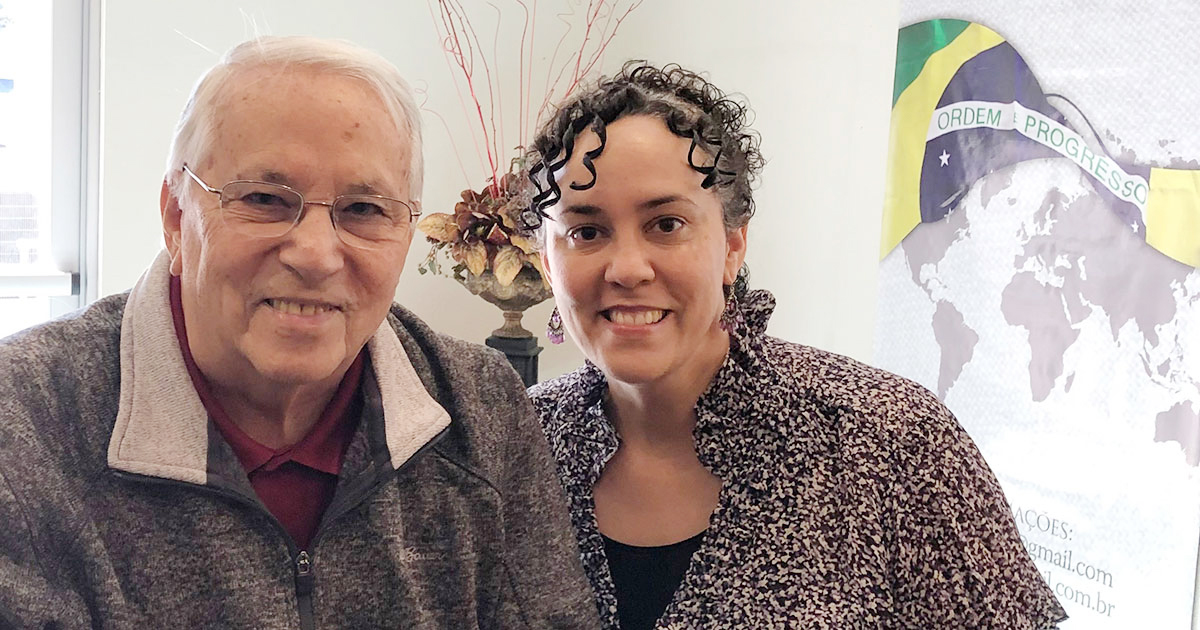Author asserts bilingualism no burden to resolving stuttering
LAWRENCE – There is no need for a speech therapist to restrict bilingual children to speaking a single language to help them overcome stuttering, according to a new paper by a University of Kansas professor.

According to Ana Paula Mumy, clinical assistant professor of speech-language-hearing, studies show that bilingual children are not burdened by code-switching between one language spoken inside their home and another spoken in the wider community. Thus, the outdated emphasis on removing or reducing the home language reflects a narrow-mindedness engendered by monolingual notions of how hard it is to speak another language.
In “Culturally-Responsive Guidelines for Serving Families of Bilingual Children Who Stutter” published in the latest edition of Perspectives of the ASHA (American Speech-Language-Hearing Association) Interest Groups, Mumy writes that this notion is often evident in the “Demands and Capacities” model of speech therapy for young children who stutter, which emphasizes minimizing the former and maximizing the latter for each child.
“There's this idea that you're putting pressure on a child, or you're creating this environment of demand, that bilingualism is confusing,” Mumy said. “I think for a person who has not had a bilingual experience, it's easy to think, ‘Oh, sure, if you have two languages that you're trying to process, of course it's going to be harder.’ But that's not true.
“That's the thing that is so interesting about this myth. We are not wired to be monolingual. There is no evidence that supports that. So bilingual language acquisition should be viewed as just a normal process.
“Children are very capable of learning two languages. Even children with conditions that would impact their language growth — for example, children with Down syndrome or children who are autistic or with specific language impairment — the research shows the gaps are evident in both languages, but they're still capable of learning both. And the key is there's an inherent need in their environment for both.
“So if I'm in a community where both are used and needed, then they should be learning both, even if there's a speech-language delay or difference. … There is evidence to support that we're not placing this extra burden or an extra load on the child. Because, again, it's a normal process.”
Mumy wrote, “This tutorial is not a systematic review or meta-analysis of the available literature,” noting that there is little of it: “There are merely two articles and two book chapters that are considered comprehensive reviews on stuttering in bilinguals.”
So, faced with a lack of evidence-based practices, Mumy argues for the “practice-based evidence” she has gleaned from her professional career and from episodes from her own trilingual life.
“When the research is limited, then you have to look at your clinical experience and expertise,” Mumy said. “And then the third thing is the patient’s preferences and values. … What does the family want and need?”
Mumy also urges therapists to beware of the unforeseen long-term consequences of attempting to force monolingualism in a young patient – which can include dividing a family. She writes of how, when her late father’s Alzheimer's disease worsened in the last months of his life, he stopped speaking English and reverted strictly to his first language, Portuguese. If her mother had not insisted upon speaking Portuguese in their home 30 years prior, Mumy would have been isolated from her father in his final months and years.
Mumy concludes the tutorial by listing a set of 10 principles to follow when working with bilingual children:
1. Language is more than a means of communication.
2. Language, culture and identity are intricately connected and contribute to a person’s well-being and sense of belonging.
3. Culture cannot be expressed or handed down in any other way but language.
4. Bilingualism is a part of everyday life for nearly half of the human race. More often than not, it is a necessity rather than a commodity.
5. Bilingualism is an asset, not a liability.
6. Language choice is about relationship and connection. It is not a detached process or practice but rather a deeply relational and emotive process.
7. Bilingualism expands a person’s communities and opportunities.
8. Language choice should not carry negative consequences for a child. Caregivers should allow their child to use their language of choice when speaking.
9. The language of the home is valuable. Valuing the home language does not mean rejecting the community language.
10. Bilingualism should be a source of joy in the life of the bilingual child or adult.
Problems like forced monolingualism arise, Mumy said, “because everybody's desperate for a solution … and that's just a very narrow way to approach the complexity of this issue.”
Rather, she said, “What we should do is encourage families and equip them and help them in terms of how to continue promoting the home language … because they look to us. They want us to guide them in the process. They think we are the experts.”
Image: Ana Paula Mumy with her late father, Genaro Souza, in 2019. Credit: Courtesy Ana Paula Mumy